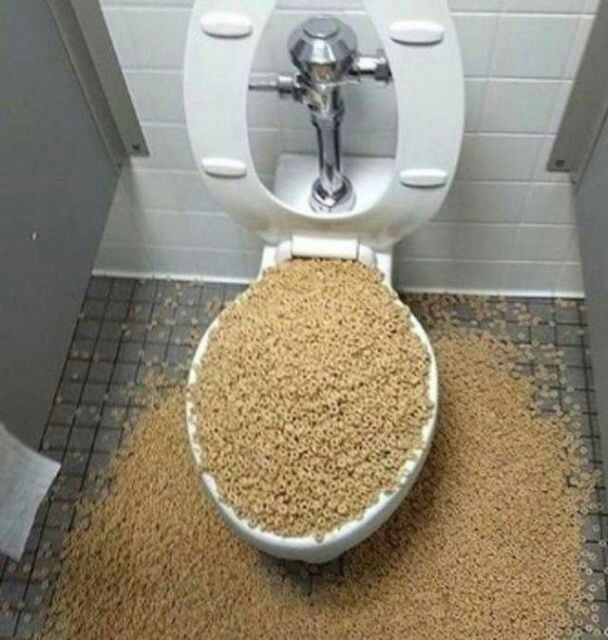Can You to Dispose of Food Down the Toilet?
Can You to Dispose of Food Down the Toilet?
Blog Article
Almost everyone is bound to have their own individual conception involving Think Twice Before Flushing Food Down Your Toilet.

Intro
Many people are usually confronted with the dilemma of what to do with food waste, particularly when it involves leftovers or scraps. One typical concern that develops is whether it's fine to flush food down the commode. In this article, we'll look into the reasons individuals could think about purging food, the repercussions of doing so, and alternative techniques for proper disposal.
Reasons that individuals might take into consideration flushing food
Lack of recognition
Some people may not understand the potential harm triggered by flushing food down the toilet. They may incorrectly believe that it's a harmless technique.
Comfort
Flushing food down the toilet may look like a quick and very easy solution to disposing of undesirable scraps, specifically when there's no neighboring trash can available.
Laziness
In many cases, people might just select to flush food out of large negligence, without taking into consideration the effects of their actions.
Repercussions of flushing food down the toilet
Ecological influence
Food waste that ends up in waterways can add to pollution and harm water communities. In addition, the water used to flush food can strain water sources.
Plumbing issues
Purging food can lead to stopped up pipelines and drains, triggering expensive plumbing repair work and troubles.
Kinds of food that must not be purged
Fibrous foods
Foods with coarse textures such as celery or corn husks can obtain entangled in pipelines and create obstructions.
Starchy foods
Starchy foods like pasta and rice can take in water and swell, leading to obstructions in pipelines.
Oils and fats
Greasy foods like bacon or food preparation oils need to never be purged down the toilet as they can strengthen and create obstructions.
Proper disposal techniques for food waste
Using a waste disposal unit
For homes furnished with garbage disposals, food scraps can be ground up and flushed with the pipes system. Nonetheless, not all foods appropriate for disposal in this manner.
Recycling
Specific food packaging materials can be recycled, decreasing waste and decreasing ecological influence.
Composting
Composting is an environmentally friendly method to deal with food waste. Organic materials can be composted and used to improve soil for gardening.
The importance of correct waste monitoring
Reducing ecological damage
Proper waste administration practices, such as composting and recycling, aid lessen pollution and protect natural deposits for future generations.
Protecting pipes systems
By staying clear of the method of flushing food down the toilet, homeowners can avoid expensive pipes repair work and preserve the honesty of their plumbing systems.
Conclusion
To conclude, while it may be appealing to flush food down the toilet for comfort, it's important to comprehend the prospective repercussions of this action. By adopting correct waste monitoring methods and throwing away food waste properly, individuals can add to much healthier pipes systems and a cleaner setting for all.
FLUSH FOOD DOWN THE TOILET?
FLUSHING FOOD CAN CAUSE BLOCKED DRAINS IN YOUR HOME
All of the plumbing fixtures in your home are connected to the same sewer pipe outside of your home. This outdoor sewer pipe is responsible for transporting all the wastewater from your home to the Council sewer mains. Even small pieces of food that go down the kitchen sink can cause problems for your sewer. It should therefore be obvious that flushing larger bits of food, such as meat, risks a clog in either the toilet itself or the sewer pipes. Flushing greasy food is even more problematic because oil coagulates when it cools, coating the interior lining of your pipes.
THE TOILET IS NOT A BIN
Food isn’t the only thing that people shouldn’t be flushing down the toilet. People use the toilet to dispose of all kinds of things such as tampons, makeup wipes, dental floss, kitty litter and even underwear. Water goes to great lengths to educate residents about the high costs and stress placed on wastewater treatment systems simply from people flushing the wrong stuff down the toilet. It costs taxpayers millions of dollars each year, and homeowners thousands in blocked drain repairs.
FLUSHING FOOD IS A WASTE OF WATER
Flushing food is a waste of our most precious resource - water. In June this year Level 1 water restrictions were introduced to protect water supply from drought conditions. Much of New South Wales continues to be affected by prolonged drought with recent figures revealing up to 97 per cent of the state remains in drought. Depending on whether you have a single or dual flush toilet, every single flush uses between five and 11 litres of water. In the current climate this is a huge amount of water to be wasting on flushing food that should be placed in the bin (or better yet, the compost).
https://www.jabplumbingsolutions.com.au/blog/can-you-flush-food-down-the-toilet

As a keen person who reads on Think Twice Before Flushing Food Down Your Toilet, I assumed sharing that piece of content was a good idea. Do you know about somebody who is fascinated by Think Twice Before Flushing Food Down Your Toilet? Feel free to promote it. Many thanks for your time invested reading it.
Recurring Service Plans Report this page